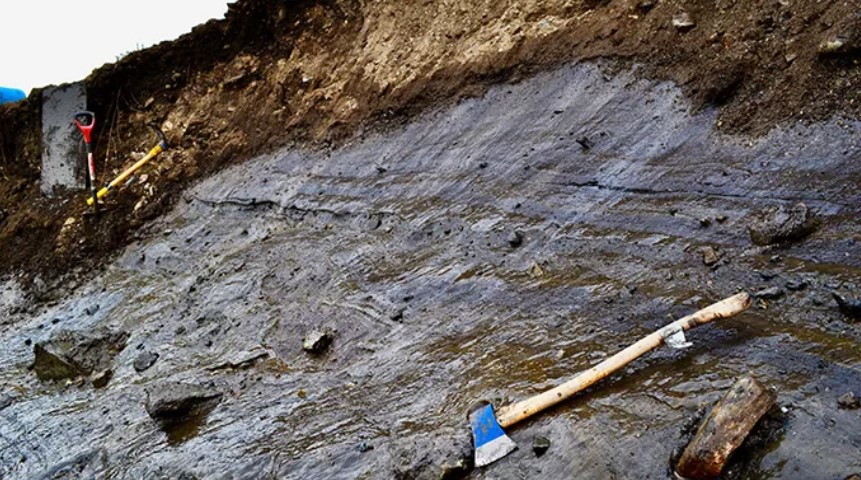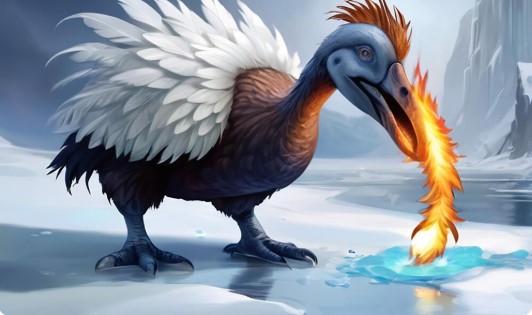Discovering the Oldest Arctic Glacier: What It Means for Our Planet

On an isolated island in the Canadian Arctic, researchers discovered the remains of an ancient glacier that could be over a million years old. The discovery may be the oldest glacier ice ever found buried in permafrost – ground that has been frozen for at least two years — in the Arctic, according to researchers in the January 1 issue of Geology. Researchers interested in researching the glacier must act quickly, as human-caused climate change has exposed the long-preserved ice to melting.
The gas bubbles, chemicals, and particulates frozen in a glacier's glacial strata, similar to entries in a logbook, can reveal information about past millennia's atmospheres and climates. However, there are few accounts of such ice older than the last great ice sheet expansion, which occurred between 26,000 and 20,000 years ago. The newly discovered ice may thus present researchers with a unique opportunity to examine the climate of the early Pleistocene epoch, during which the Earth experienced episodic ice ages separated by warm periods known as interglacial periods. "These [Pleistocene climate shifts] are analogs for what we can see in the future," says geomorphologist Daniel Fortier from the University of Montreal.
In 2009, Fortier and colleagues were exploring a buried fossilized forest on Bylot Island in Canada's Nunavut Territory when they came across the sites of some recent landslides caused by permafrost melt.
The slides revealed translucent, stratified bodies of ice that had been buried a few meters beneath, above the fossil forest. Much to Fortier's amazement, radiocarbon analysis of organic materials in the ice revealed that it was more than 60,000 years old. "I was not expecting that at all," he jokes.
Furthermore, the researchers detected a flip in the alignment of magnetic minerals in the sediment layers above the ice that correlated with a reversal of the Earth's magnetic field approximately 770,000 years ago, indicating that the ice was at least that age. Previous studies has dated the fossil forest on which the glacier lay to between 2.8 and 2.4 million years ago, giving the ice the greatest probable age.
The gas bubbles, chemicals, and particulates frozen in a glacier's glacial strata, similar to entries in a logbook, can reveal information about past millennia's atmospheres and climates. However, there are few accounts of such ice older than the last great ice sheet expansion, which occurred between 26,000 and 20,000 years ago. The newly discovered ice may thus present researchers with a unique opportunity to examine the climate of the early Pleistocene epoch, during which the Earth experienced episodic ice ages separated by warm periods known as interglacial periods. "These [Pleistocene climate shifts] are analogs for what we can see in the future," says geomorphologist Daniel Fortier from the University of Montreal.
In 2009, Fortier and colleagues were exploring a buried fossilized forest on Bylot Island in Canada's Nunavut Territory when they came across the sites of some recent landslides caused by permafrost melt.
The slides revealed translucent, stratified bodies of ice that had been buried a few meters beneath, above the fossil forest. Much to Fortier's amazement, radiocarbon analysis of organic materials in the ice revealed that it was more than 60,000 years old. "I was not expecting that at all," he jokes.
Furthermore, the researchers detected a flip in the alignment of magnetic minerals in the sediment layers above the ice that correlated with a reversal of the Earth's magnetic field approximately 770,000 years ago, indicating that the ice was at least that age. Previous studies has dated the fossil forest on which the glacier lay to between 2.8 and 2.4 million years ago, giving the ice the greatest probable age.
Did you know? You can comment on this post! Just scroll down
According to Fortier, the discovery demonstrates the durability of permafrost. While climate projections predict that permafrost will entirely thaw in many locations by the end of the century, he points out that this intact glacier has survived warmer interglacial times than currently. "I don't believe permafrost will go so quickly. "The system is more resilient than we realize."
Article Posted 4 Months ago. You can post your own articles and it will be published for free.
No Registration is required! But we review before publishing! Click here to get started
One Favour Please! Subscribe To Our YouTube Channel!
468k
Cook Amazing Nigerian Dishes, Follow Adorable Kitchen YouTube Channel!
1.1m
Like us on Facebook, Follow on Twitter
React and Comment
Click Here To Hide More Posts Like This
Watch and Download Free Mobile Movies, Read entertainment news and reports, Download music and Upload your own For FREE.
Submit Your Content to be published for you FREE! We thrive on user-submitted content!
But we moderate!

















